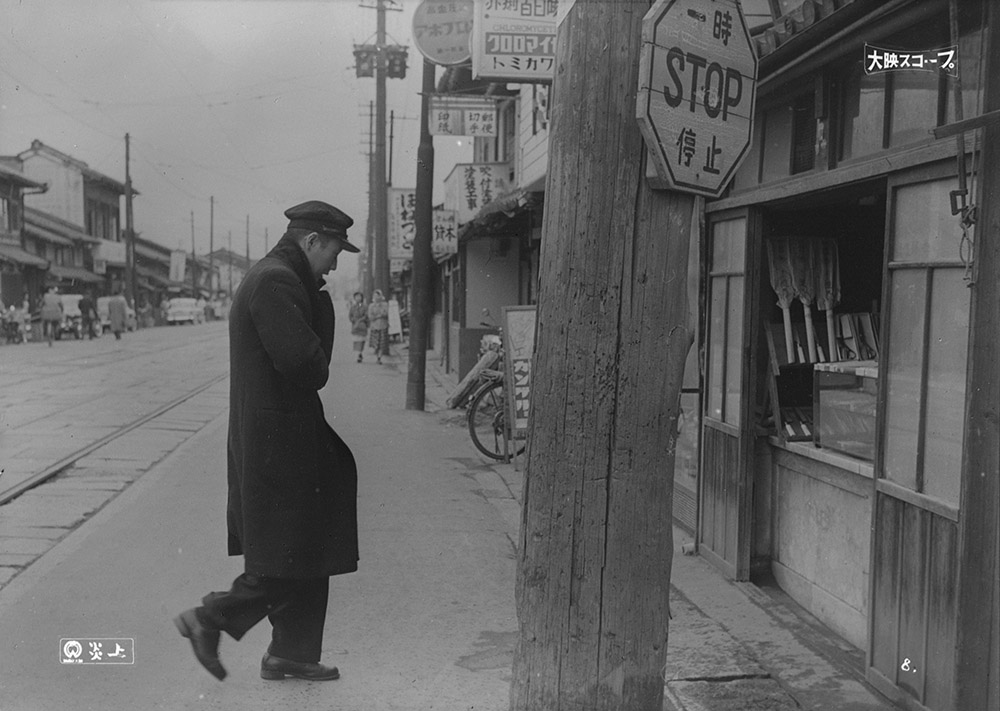^Pre-screening introduction


Dir: Kon Ichikawa
Ori: Yukio Mishima
Scr: Natto Wada, Keiji Hasebe
DP: Kazuo Miyagawa
Cast: Raizo Ichikawa, Nakamura Ganjiro II, Tatsuya Nakadai
Ichikawa’s first widescreen feature is an adaptation of Yukio Mishima’s novel The Temple of the Golden Pavilion, which is loosely based on the real-life event of the burning of the Golden Pavilion (Kinkakuji) by Zen acolyte Yoken Hayashi in 1950. Mizoguchi, a high-school student who stutters, is taken in by a Zen abbot, a friend of his late father who was himself a monk, to stay and become an acolyte at the Shukaku Temple, whose beauty has long captured his imagination. However, he is resentful to the abbot who runs the temple in ways questionable. With the latest Daieiscope process, Ichikawa worked with photographer Miyagawa to create the world of violence and beauty portrayed in Mishima’s novel, highlighting the characters’ loneliness and obsession in the negative Zen space created with the simple and clean black-and-white widescreen framing.
CinemaScope
Introduced by Twentieth Century Fox in 1953, the CinemaScope was a major player among the surge of widescreen technologies in the 1950s. It is based on an invention of a new film process by Frenchman Henri Chrétien in the 1920s using an anamorphic lens on the filming camera to compress the image laterally and dilate the image when projected with corresponding attachments. With 35mm film in the same frame size the aspect ratio of the projected image is 2.55:1 (later reduced to 2.35:1 with the addition of an optical sound track), which is more than twice of that of the 1.37:1 Academy ratio.
As CinemaScope required simple alternations to existing theatres compared to Cinerama, it soon became the mainstream format with film studios around the world coming up with improved versions like Daiei Motion Pictures’ Daieiscope and Shawscope by the Shaw Brothers. While Hollywood later turned to the better Panavision anamorphic lenses, the term ‘scope’ remains synonymous with widescreen processes.